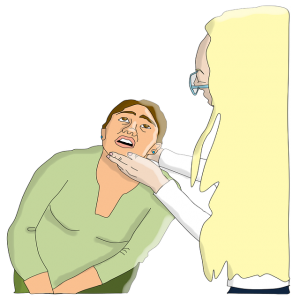How To Write Evidence Based Practice Papers in Nursing
 Are you a nursing student looking for information on how to write evidence based practice papers? the reason why it is important to base our nursing care on evidence based research is to enhance nursing care delivery services, improve patient outcome and also assist other agencies enhance health care delivery through published interventions.
Are you a nursing student looking for information on how to write evidence based practice papers? the reason why it is important to base our nursing care on evidence based research is to enhance nursing care delivery services, improve patient outcome and also assist other agencies enhance health care delivery through published interventions.
Since back in the day, the medical field has been one of the most crucial fields in the society. Quality assurance is of very high value as this can draw the thin line between life and death. However this does not all start in the hospital as a head nurse or doctor but rather it starts right from nursing school. Evidence based practice papers are simply written to prove a certain hypothesis that is at hand. Are you trying to reinvent the wheel? No! But rather just trying to modify it.
These papers are important as they help keep up with trends, save cost, evaluate projected outcome and to do away with methods that are quite outdated. An evidence based practice contains a couple of sections and are basically written with the same formatting as essays, but with a bit of a twist that I will take you through. At the end of this trust me you’ll be a pro at it.
Guidelines of Writing Evidence Based Practice Paper
Title
Right down from the basics you will need a title for your evidence based practice. This is majorly to guide you on what you are to write and it creates the basis for your hypothesis. Your title should be quite brief and pinpoint clearly what your evaluation will be on. Your tile can take a couple of forms as well. It can take the form of a question, a simple statement or an opposing fact. This way you will have set the direction right from the start and you will give the reader something to anticipate at the end of it. Simply think of it as a pacesetter.
Establish your thesis
A thesis is basically the controlling statement that you are standing with. Have in mind that a thesis is different from a hypothesis in that: a hypothesis is an idea that you can either prove or put claims against it. However a thesis is basically what you stand for and it gives the agenda that you will be pushing all through. Any evidence based practice without a thesis is a considered an incomplete paper as it leaves a lot to guesswork and imagination.
Read our article on how to write nursing capstone project papers to understand what makes a strong thesis statement.
Good formatting
The format of your nursing essay paper is basically the eye catcher and it snatches the attention of your reader. It is always good to maintain a certain level of professionalism even as you write your paper. The best formatting to go for at this juncture is the APA formatting. You will find out that when you have mastered this formatting then all you need to take care of is the content and the rest will flow. Basically, the APA formatting is the kind of formatting used in social sciences and it gives a continuous flow of ideas which explains its dominance. It is divided into four main sections that are;
- Title- This hints what they appear is all about and gives the reader the direction to take and what facts to use during their evaluation.
- Abstract- This is the basis of your thesis and your try explaining it in not more than 250 words and not less than 150 words. Let your reader know that you really know what you are talking about
- Main body- This is the ‘flesh’ of your paper as it contains all the facts, figures and arguments placed. This is the platform that you have to put all your ideas and arguments all together to boost your thesis.
- References- Many who have had their papers rejected will tell you that they lacked this part of the paper. This is where you let your reader know from where you sourced this information. But first hold that thought, I will be expounding it in a few.
Research
 The quality of your work will be determined by the amount of research you carry out. In this field, as you might well know half a dosage is not the same as a full dose. A 1*2 prescription is not similar to 2*1. Despite the fact that they add up mathematically they don’t add up medically. You have to get current references and make sure that in the event that you decide to quote something that you indicate from where it is lifted from.
The quality of your work will be determined by the amount of research you carry out. In this field, as you might well know half a dosage is not the same as a full dose. A 1*2 prescription is not similar to 2*1. Despite the fact that they add up mathematically they don’t add up medically. You have to get current references and make sure that in the event that you decide to quote something that you indicate from where it is lifted from.
After all, you do want to produce fresh content. This is simply a process that you will follow; the title gives birth to your thesis, your thesis brings about research, research produces evidence and evidence will ultimately give the evidence based paper you are looking for. The one thing that you need to realize is that you are not limited to the number of contexts that you can research from. You can simply cover a wide scope for more credibility. Also, make sure that you get your facts right. As you write your evidence based practice paper in nursing, have in mind that the quality of your work is directly proportional to the quantity of your research.
References
Getting back to this as earlier promised; references take the guesswork out of your paper. They are the surest indication of research and they get even better when you can link them up together. You can get an inter-relation between your references and this strengthens your paper even the more. Despite the fact that you are just proving your hypothesis, you can make an original piece from other peoples work. The way to do this is getting creative and where you borrow their ideas make sure that you give them the credit they deserve. That way you will have put your best foot forward as far as evidence based practice papers are concerned.
Another very important thing to put in mind is that you should always describe your methods. On this, you should be very keen as your credibility is at stake here. You should ascertain that all measurements, figures, interviews, observations, and surveys are taken with precision and are transferred correctly. Do this and trust me you will have anchored yourself properly as far as your paper is concerned. Get the right material, formatting and ensure precision in everything and you’ll be good to go.
Where To Buy Evidence Based Papers in Nursing
Are you a nursing student looking for the best nursing paper writing service online? our team of writers are well versed with different nursing papers. We are experts in writing DNP projects, essays, research papers among others.


 Australia and the United Kingdom are both English-speaking countries. Are you a teacher or student looking to join the education systems in either country? Understanding how each education systems works would help you settle quickly and start working toward your goals. The two systems differ in certain aspects, and it is in your interest to know what those differences are. This comparison between Australian and British education systems hopefully provides information you would find helpful.The comparison touches on areas such as costs, examinations, regulation, funding as well as higher education.
Australia and the United Kingdom are both English-speaking countries. Are you a teacher or student looking to join the education systems in either country? Understanding how each education systems works would help you settle quickly and start working toward your goals. The two systems differ in certain aspects, and it is in your interest to know what those differences are. This comparison between Australian and British education systems hopefully provides information you would find helpful.The comparison touches on areas such as costs, examinations, regulation, funding as well as higher education. In Australia, the
In Australia, the